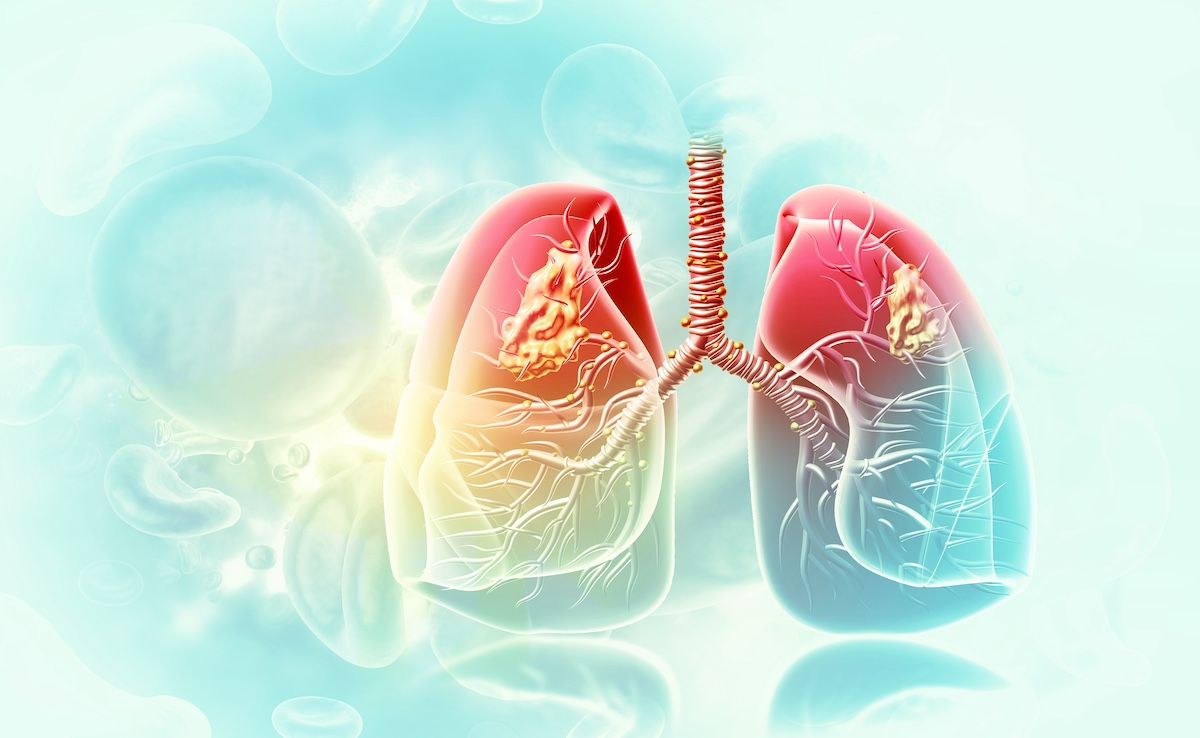Video
Dr Blythe Adamson: PD-L1 as a Predictive Biomarker in Lung Cancer Continues to Evolve
Personalized recommendations for patients with non–small cell lung cancer with squamous histology could benefit from research on treatment choice and biomarkers, noted Blythe Adamson, PhD, MPH, principal quantitative scientist at Flatiron Health.
Personalized treatment recommendations for patients with non–small cell lung cancer (NSCLC) with squamous histology could benefit from future comparative effectiveness research on treatment choice and biomarkers, should PD-L1 ultimately not be deemed a meaningful predictive biomarker, noted Blythe Adamson, PhD, MPH, principal quantitative scientist at Flatiron Health.
Transcript
The results of your study on PD-L1 as a predictive biomarker in NSCLC were mixed and showed that PD-L1 may not be an appropriate predictive biomarker for checkpoint inhibitor use in NSCLC with squamous histology. Could PD-L1 eventually be phased out all together or its utility restricted?
So this field of using PD-L1 as a predictive biomarker in immuno-oncology, for lung cancer specifically, is still really in flux. And the complex FDA-approved indications that we’re seeing are now dependent on line of therapy, they’re dependent on histology. And the key takeaway that we learned from this study, that wasn’t known before, was that if you have high PD-L1 vs low PD-L1, that really makes a difference if you have nonsquamous histology.
But as you mentioned in your question, for patients that have squamous histology, it didn’t really make that much of a difference. I mean, there was 2 months longer, about, life expectancy, if you have squamous with high PD-L1 compared to low, but it wasn’t a significant difference. As compared to nonsquamous, it's was about 8 months’ longer life expectancy if you have high PD-L1.
But one of the challenges and opportunities that we have with biomarkers of this type are that in the stains, we have this continuous numeric value—so a percentage stain—and in this study, we considered you to have a high value if it was more than 50% and a low value if you have less than 50%. But some other studies have shown that in second-line therapy, even having 1%, at least, stain can be a meaningful predictor. So, it’s hard to answer your question for every single threshold, because in this study we only looked at the 50% threshold and it could be there’s benefit at different ones.
But I think the real interesting opportunity to answer your question would be a study in the future that would do a comparative effectiveness analysis of different treatment types for those squamous patients. In this study, one of the inclusion criteria was that everyone was using pembrolizumab. But if we’re seeing that, for these squamous patients, PD-L1 is not a meaningful predictor, a really interesting study would be if we looked at all the squamous patients with non–small cell lung cancer and all the different treatments and designed a rigorous study, is it that patients with squamous histology do better on a different treatment type than patients with nonsquamous histology, and are there other meaningful interactions with the choice of treatment and the biomarkers? So, it just opens up more and more questions for us to tailor this type of personalized treatment recommendations.
Are there ever circumstances where immune checkpoint inhibitors are indicated when a patient has a terminal disease (less than 30 days to live)?
We don’t have data, really, from clinical trials that would let us know whether or not these drugs are actually able to give benefit in terms of extending the life of patients in the last 30 days. And really that’s because the eligibility criteria for the clinical trials for these drugs almost always include that part of it.
Patients need to have an expected life of at least 6 additional months. And so that leaves us really with not really knowing and, again, an opportunity, I think, for more real-world evidence, observational studies in the future. If we’re not going to be able to have that good question answered through a clinical trial, it would be meaningful to learn it some other way.




